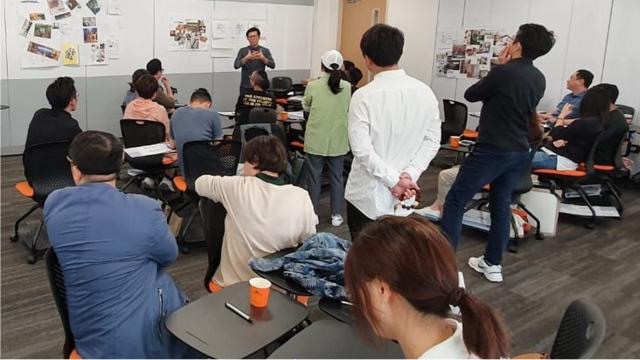The winner's spotlight was on a team of six SITizens when they clinched the Best Design Award in an Autonomous Aerial Vehicle Challenge (AAVC) on 13 January 2020 in Chumphon, Thailand.
Organised in conjunction with the 'Innovation Aviation and Aerospace Industry International Conference 2020', the competition saw 24 other teams from Japan, Singapore, Thailand and Vietnam.
Held over three days, the objective of the competition was for teams to design an unmanned aerial vehicle (UAV) to perform an aerial search and rescue mission over a designated plot of land. The UAV would have to ferry a medical supply kit to a simulated injured person at a location that was beyond the visual line of sight of the remote pilot.
"The name of our team, 'NUS-SIT', reflects SIT's collaboration with the National University of Singapore (NUS). Even though all of us are from SIT-University of Glasgow (UofG) Aeronautical Engineering and Aerospace Systems* degree programmes, our advisor Associate Professor Sutthiphong Srigrarom, who used to be our mentor at SIT, is now in NUS," said team leader Andrew James Chua, Year 4, Aeronautical Engineering programme.
"I am very grateful to the management of NUS and SIT to allow us to collaborate in this unique AAVC competition in Asia. The hard work, high spirit and dedication of the students helped all of us overcome a lot of challenges, especially when working across two universities with different timetables and systems. Against the stiff competition, I congratulate the team's united efforts to complement their strengths and resources to emerge the winner of the Best Design category," said A/Prof Sutthiphong Srigrarom, Mechanical Engineering Department, NUS.
 From left to right: Year 4 Aeronautical Engineering (SIT-UofG) programme students, Loo Zi Yi, Alex; Chew Wei Hock, Ajax; Andrew James Chua Sheng Jie; Loh Jun Rong, Sean; Yap Wei Liang (SIT-UofG Aerospace Systems programme), and Adrian Yap Yi Rong.
From left to right: Year 4 Aeronautical Engineering (SIT-UofG) programme students, Loo Zi Yi, Alex; Chew Wei Hock, Ajax; Andrew James Chua Sheng Jie; Loh Jun Rong, Sean; Yap Wei Liang (SIT-UofG Aerospace Systems programme), and Adrian Yap Yi Rong.
Team NUS-SIT's winning design was a hybrid of a conventional fixed wing aircraft and a quad-coptor. The hybrid design is known for its ability to perform vertical take-offs and landings, thereby eliminating the need for a 'take-off distance'. With the right design, this unique combination of flight principles translates to an aerial vehicle with good endurance to sustain flight during forward movements, as well as the ability to optimise the tilting mechanism of the quad-motors.
"The invaluable experience of designing a UAV from scratch under pressure is the most memorable part of the competition. It is also an eye-opening experience for all of us as we learnt a lot from the exposure to the various UAV concepts presented by the other participants. The precious contacts that we established from networking with other universities will be cherished and developed," said Andrew.

Organised by the International Academy of Aviation Industry (IAAI) King Mongkut's Institute of Technology, the AAVC 2020 was its seventh edition. The event has been popularly dubbed as a competition that provides the opportunity for participants to grow and share their knowledge with fellow aviators from around the world.
*Since November 2018, SIT-UofG Aeronautical Engineering and Aerospace Systems programmes have merged to become a joint SIT-UofG BEng (Hons) in Aerospace Engineering programme.
![[FA] SIT One SITizen Alumni Initiative_Web banner_1244px x 688px.jpg](/sites/default/files/2024-12/%5BFA%5D%20%20SIT%20One%20SITizen%20Alumni%20Initiative_Web%20banner_1244px%20x%20688px.jpg)


